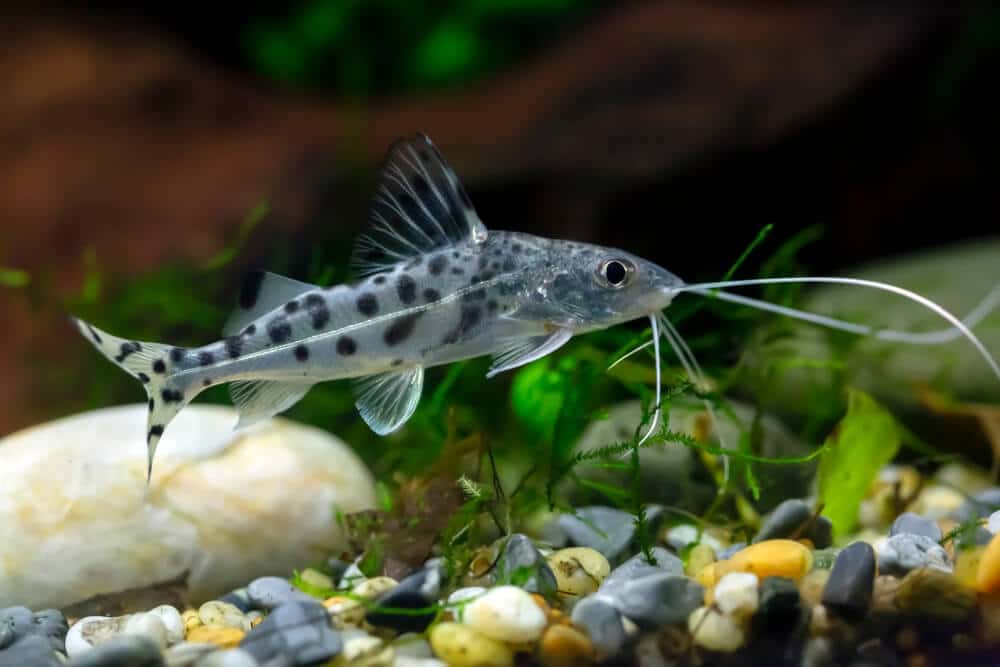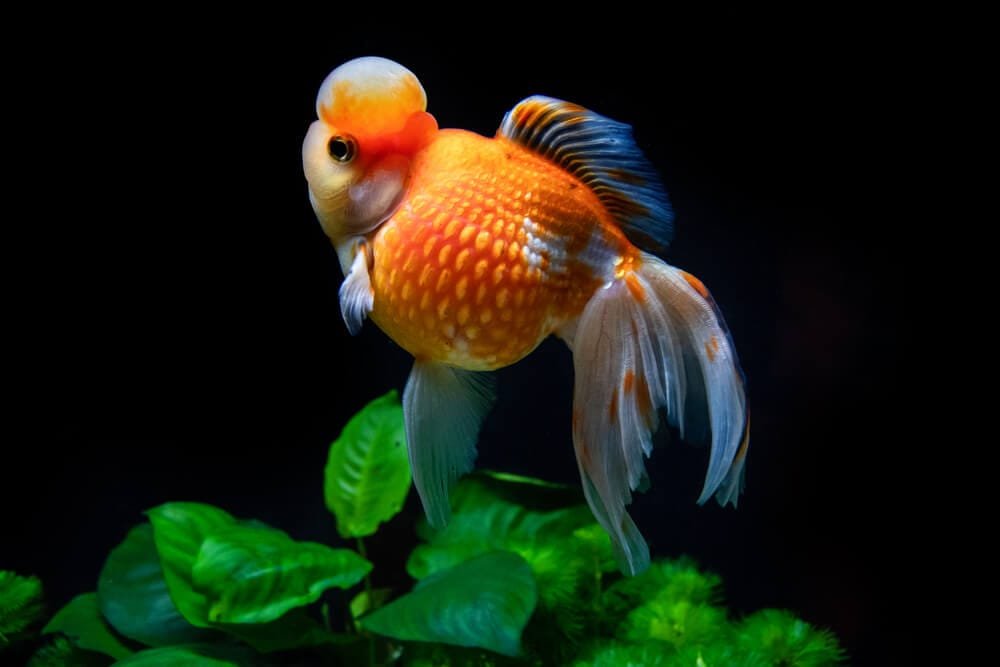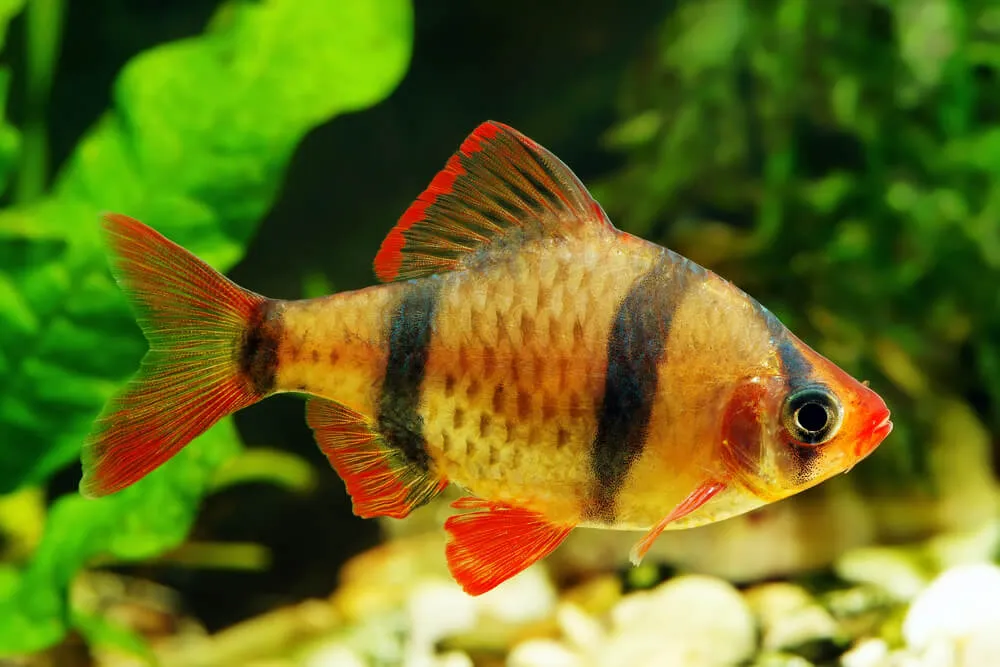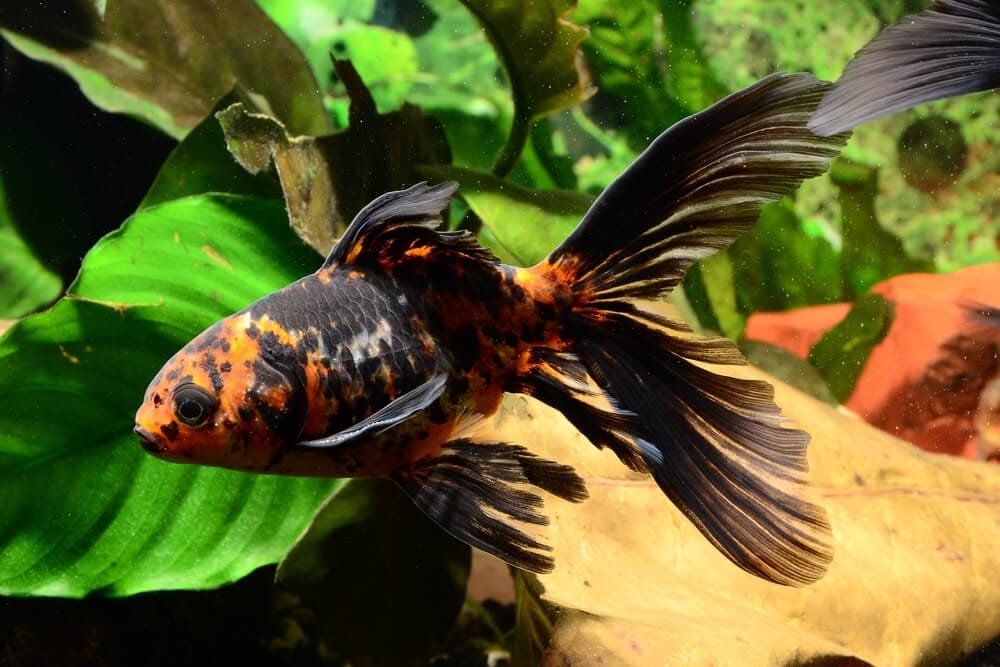How Do You Breed Molly Fish?
If you’re curious about breeding Molly Fish, you’re in the right place. In this article, we’ll break down the process step-by-step so you can successfully breed these fascinating aquatic creatures. From selecting the right tank setup to identifying the ideal breeding pairs, we’ve got you covered. So, grab your fish net and let’s dive into the wonderful world of Molly Fish breeding!
Choosing the Right Mollies
When it comes to breeding Molly fish, it is important to choose the right species. There are various Molly species to choose from, each with its own unique characteristics and requirements. Some common Molly species include Black Molly, Dalmatian Molly, and Balloon Molly. Take some time to research and familiarize yourself with each species to determine which one best suits your preferences and needs.
Identifying Molly Species
Before you begin the breeding process, it is crucial to accurately identify the Molly species you have. This will help you understand their natural behaviors, habitat requirements, and compatibility with other species. Look for distinctive features such as color patterns, fin shapes, and body size. You can consult a reliable guidebook or seek advice from experienced fishkeepers or breeders if you are unsure about the species.
Selecting Healthy Adult Mollies
To ensure a successful breeding process, it is essential to start with healthy adult Mollies. Look for Molly fish that appear active, alert, and exhibit vibrant colors. Avoid selecting fish that show signs of illness, such as torn fins, cloudy eyes, or fungus growth. It is also beneficial to choose Mollies that have good body shape and finnage, as this can indicate overall health and genetic quality.
Determining Male and Female Mollies
To breed Mollies successfully, you need to identify the males and females accurately. Female Mollies are typically larger and have a rounded abdomen, while males are usually smaller and have a more streamlined body shape. Additionally, male Mollies have a modified anal fin called a gonopodium, which helps them fertilize the female’s eggs during mating. Observing their behavior can also give you clues, as males tend to chase and exhibit mating behaviors towards females.
Creating an Ideal Breeding Environment
To encourage breeding behavior in Mollies, it is crucial to create an ideal breeding environment. This includes providing suitable tank conditions, ensuring proper water parameters, and adding appropriate decorations. The breeding tank should be well-maintained, spacious enough to accommodate multiple fish, and equipped with hiding places for the females to seek refuge during mating. Mimicking natural conditions, such as adding live plants or floating vegetation, can also stimulate their breeding instincts.
Preparing the Breeding Tank
Before introducing the Mollies to the breeding tank, it is crucial to prepare it properly. This involves selecting an appropriate tank size, setting up the ideal water environment, adding hiding places, and monitoring water temperature and quality.
Selecting an Appropriate Tank Size
The size of the breeding tank is an important consideration. Ideally, it should be at least 10-20 gallons to provide enough space for the Mollies and their fry. A larger tank will also ensure a more stable water environment. Keep in mind that Mollies are active fish, so providing sufficient swimming space is crucial for their overall well-being.
Setting Up an Ideal Water Environment
Creating the right water environment is essential for the breeding process. Mollies thrive in slightly alkaline water with a pH range of 7.5-8.5. Maintaining a stable temperature between 75-82°F (24-28°C) is optimal for breeding. It is crucial to regularly test the water parameters and make any necessary adjustments to ensure the water conditions remain ideal for the Mollies.
Adding Hiding Places
Providing hiding places in the breeding tank is crucial, especially for female Mollies during mating. Adding decorations such as plants, rocks, or driftwood will create secluded areas where the females can seek refuge from persistent males. This will reduce stress and increase the chances of successful breeding.
Monitoring Water Temperature and Quality
Regular monitoring of water temperature and quality is essential for a successful breeding environment. Use a reliable thermometer to check the water temperature daily and make adjustments if necessary. Additionally, test the water parameters using a water testing kit to ensure the ammonia, nitrite, and nitrate levels are within acceptable ranges. Clean the tank regularly and perform partial water changes to maintain optimal water quality.
Conditioning and Introduction
Before introducing the Mollies to the breeding tank, proper conditioning is essential. This involves separating the male and female Mollies, feeding them a nutritious diet, introducing females to the breeding tank, and monitoring the males’ behavior.
Separating Male and Female Mollies
To prepare for breeding, it is recommended to separate the male and female Mollies for a period of time. This separation allows both sexes to develop their reproductive systems fully. Keep the males and females in separate tanks or sections of the tank, but within sight of each other. This can help stimulate their breeding behaviors when they are reintroduced.
Feeding the Mollies a Nutritious Diet
Proper nutrition is vital for the health and breeding readiness of the Mollies. Feed them a varied diet consisting of high-quality flake food, supplemented with live or frozen foods such as brine shrimp, daphnia, or bloodworms. Providing a balanced and nutritious diet will ensure that the Mollies are in optimal condition for breeding.
Introducing Females to the Breeding Tank
After conditioning the male and female Mollies separately, it is time to introduce the females to the breeding tank. Choose the healthiest and most vibrant females for breeding. Release them into the tank and observe the males’ behavior. The males may exhibit mating pursuits, such as chasing or displaying bright colors, which indicates their readiness to breed.
Monitoring the Males’ Behavior
While the females are being introduced to the breeding tank, closely observe the males’ behavior. Look for signs of aggression, excessive stress, or persistent harassment towards the females. In some cases, it may be necessary to remove aggressive males to ensure the safety and well-being of the females. By monitoring their behavior, you can ensure a more harmonious breeding environment.
Recognizing Breeding Behaviors
Once the Mollies are introduced to the breeding tank, it is important to recognize and understand their typical breeding behaviors. This includes observing mating pursuit, recognizing mating rituals, identifying signs of pregnancy, and separating the female Molly when necessary.
Observing Mating Pursuit
Male Mollies are known for their persistent mating pursuit of the females. They may chase the females, display vibrant colors, and attempt to nudge or bump them. This behavior indicates the males’ desire to mate and fertilize the females’ eggs. It is essential to ensure that the mating pursuit does not become excessively aggressive or stressful for the females.
Recognizing Mating Rituals
Mollies have distinct mating rituals, which involve intricate movements and displays. The males may swim alongside the females, perform a mating dance, or flare their fins to attract their attention. These rituals play a crucial role in courtship and can help strengthen the bond between the male and female before breeding.
Identifying the Signs of Pregnancy
Female Mollies are known for their ability to store sperm, allowing them to give birth to multiple broods of fry from a single mating event. One of the most prominent signs of pregnancy is a swollen abdomen. As the pregnancy progresses, the gravid spot located near the female’s anal vent may become more prominent. However, keep in mind that some Mollies can mimic the appearance of being pregnant even when they are not.
Separating the Female Molly
When you notice signs of pregnancy in a female Molly, it is crucial to separate her from the males and place her in a separate tank or section of the tank. This will protect the female and her developing fry from potential harm or stress caused by persistent mating pursuits. Providing a quiet and well-maintained space for the pregnant female will increase the chances of successful fry development.
Caring for the Fry
Once the female Molly has given birth to fry, special care is needed to ensure their survival and healthy growth. This includes protecting the fry from adult Mollies, providing adequate food, maintaining optimal water conditions, and monitoring their growth and development.
Protecting the Fry from Adult Mollies
Adult Mollies can be curious or even predatory towards the fry. To protect them, consider moving the fry to a separate tank or section of the tank where they cannot be accessed by the adult Mollies. Additionally, providing hiding places such as fine-leaved plants or mesh netting will give the fry a safe space to stay away from the adults.
Providing Adequate Food for the Fry
Feed the fry a diet specifically designed for their small mouths and rapid growth. Crushed flake food or specially formulated fry food will provide the necessary nutrients to support their development. Consider feeding them multiple small meals throughout the day to ensure they receive enough nutrition.
Maintaining Optimal Water Conditions
Water quality is crucial for the healthy growth of the fry. Regularly monitor the water parameters and perform regular water changes to maintain optimal conditions. Keeping the water temperature stable and within the recommended range will also contribute to the fry’s growth and overall well-being.
Monitoring Fry’s Growth and Development
Observe the fry closely to monitor their growth and development. Look for signs of normal swimming patterns, healthy appetite, and growth progress. Pay attention to any anomalies or signs of illness, such as lethargy, loss of appetite, or abnormal physical appearance. Promptly address any issues to prevent potential health problems or stunted growth.
Feeding and Raising the Fry
Once the fry have grown a bit and become more independent, it is important to continue providing them with suitable food and maintaining a clean and maintained tank to support their healthy development.
Choosing Suitable Fry Foods
As the fry grow, their dietary needs will change. Gradually introduce newly hatched brine shrimp, micro worms, or finely crushed flakes to their diet. These foods are rich in protein and essential nutrients for their rapid growth. It is crucial to provide a varied diet to ensure their nutritional needs are met.
Offering Frequent Feedings
Fry have small stomachs and high metabolic rates, so it is important to feed them small meals frequently. Offer food in small portions multiple times a day to ensure they are receiving adequate nutrition. Be careful not to overfeed, as excessive food can lead to poor water quality and health issues.
Keeping the Tank Clean and Maintained
Maintaining a clean and well-maintained tank is essential for the growing fry. Perform regular water changes, remove any uneaten food or debris, and monitor the water parameters to ensure optimal conditions. A clean environment will contribute to the fry’s health and minimize the risk of diseases or health problems.
Providing Optimal Water Temperature
Maintaining the proper water temperature is crucial for the healthy development of the fry. Keep the temperature stable and within the recommended range for Molly fish. Sudden temperature fluctuations or extremes can stress or even harm the fry. Use a reliable heater and thermometer to maintain a consistent and suitable temperature.
Separating the Fry from Adult Mollies
As the fry grow and become more independent, it is important to separate them from the adult Mollies to prevent potential harm or stress. This includes setting up a separate fry tank, introducing the fry to the new tank, monitoring their adaptation, and providing dedicated care for the fry.
Setting Up a Separate Fry Tank
Prepare a separate tank specifically for the fry to live and grow safely. Ensure the tank is adequately sized to accommodate their increasing numbers and growth. Provide suitable hiding places and gentle filtration to maintain optimal water quality.
Introducing the Fry to the New Tank
Carefully transfer the fry to the new tank, ensuring minimal stress during the process. Use a small container or net to gently scoop them up and transfer them to the fry tank. Keep an eye on their behavior and behavior of the adult Mollies, making sure the fry settle in well and are not exposed to potential harm.
Monitoring the Fry’s Adaptation
After introducing the fry to the new tank, observe their adaptation and behavior closely. Watch for signs of stress, such as erratic swimming or loss of appetite. The fry may take some time to acclimate to their new environment, so be patient and provide them with the necessary care and attention.
Feeding and Caring for the Fry Separately
In the separate fry tank, continue feeding the fry appropriately for their stage of development. Offer them a varied diet consisting of live or frozen foods suitable for their size. Regularly clean the tank, monitor the water parameters, and address any health issues promptly. Providing a dedicated care routine will support their healthy growth and development.
Preventing Inbreeding
To maintain a healthy breeding stock and prevent potential genetic issues, it is crucial to avoid inbreeding among the Mollies. Inbreeding can lead to weaker offspring and increased susceptibility to diseases or deformities. To prevent this, consider understanding the risks of inbreeding, rotating males and females, maintaining a healthy breeding stock, and introducing new Mollies into the breeding program.
Understanding the Risks of Inbreeding
Inbreeding can lead to a reduced genetic diversity within the breeding stock, increasing the likelihood of genetic disorders or weaknesses. It is essential to understand the potential risks associated with inbreeding and take necessary steps to prevent these issues.
Rotating Males and Females
To prevent inbreeding, rotate males and females during the breeding process. This means avoiding repeated mating between siblings or close relatives. Introducing new bloodlines regularly can help maintain genetic diversity and healthy offspring.
Maintaining a Healthy Breeding Stock
Regularly assess the health and appearance of your Mollies to ensure a healthy breeding stock. Pay attention to signs of disease, deformities, or poor body condition. Remove any individuals that may pose a risk to the overall breeding population and replace them with healthy and genetically diverse individuals.
Introducing New Mollies
To introduce fresh genetic material into your breeding program, consider acquiring new Mollies from reputable sources. Select individuals that exhibit desirable traits and are genetically unrelated to your existing breeding stock. Introducing new Mollies will help diversify the gene pool and maintain the overall health and vitality of your fry.
Breeding for Specific Traits
If you have specific traits or characteristics you want to breed for, understanding genetics and traits is essential. This involves learning about the inheritance patterns of desired traits, practicing selective breeding, recording and tracking breeding results, and continuing the breeding process to achieve the desired outcomes.
Understanding Genetics and Traits
Before attempting to breed for specific traits, it is crucial to understand the basics of genetics and how traits are inherited. Research the inheritance patterns, dominant and recessive genes, and basic principles of genetic variability. This knowledge will help you make informed decisions and determine the likelihood of producing offspring with desired traits.
Selective Breeding for Desired Characteristics
Selective breeding involves choosing individuals with specific traits to mate and produce offspring with those desired characteristics. Carefully select Mollies that exhibit the traits you are looking to breed for, whether it’s specific color patterns, fin shapes, or other physical attributes. Be patient, as breeding for specific traits may require multiple generations to achieve the desired outcomes.
Recording and Tracking Breeding Results
Keep detailed records of the breeding process, including the pairings, dates of mating, and outcomes of each breeding event. This will help you track the inheritance patterns and determine which combinations produce the desired traits. Over time, you will be able to refine your breeding program and increase the likelihood of producing offspring with the desired characteristics.
Continuing the Breeding Process
Breeding for specific traits is an ongoing process that requires dedication and patience. As you continue to breed Mollies, select the offspring that possess the desired traits and use them as the basis for future breeding. Continue to refine your breeding program over multiple generations to achieve consistent results and maintain the desired traits.
Breeders’ Tips and Common Issues
As you embark on your journey of breeding Mollies, here are some valuable tips and common issues to be aware of. Monitoring water conditions regularly, preventing diseases and parasites, providing sufficient tank space, and avoiding overbreeding will contribute to your success as a breeder.
Monitoring Water Conditions Regularly
Regularly test and monitor the water parameters in both the breeding and fry tanks. This includes checking the temperature, pH, ammonia, nitrite, and nitrate levels. Maintaining optimal water conditions is crucial for the health and well-being of the Mollies and their fry. Perform regular water changes and address any water quality issues promptly to prevent potential health problems.
Preventing Diseases and Parasites
Widespread diseases and parasitic infections can jeopardize the health of your breeding stock and fry. Practice good hygiene and quarantine new fish before introducing them to your breeding tanks. Avoid overcrowding, provide a balanced diet, and maintain optimal water conditions to strengthen the immune systems of your Mollies. If necessary, consult a vet or experienced fishkeeper for advice on disease prevention and treatment.
Providing Sufficient Tank Space
Sufficient tank space is crucial for the well-being and successful breeding of Mollies. Overcrowding can lead to stress, aggression, and poor water quality. Ensure the tank size is suitable for the number of Mollies you plan to breed. A spacious tank will provide ample swimming space, reduce territorial disputes, and promote a healthier breeding environment.
Avoiding Overbreeding
While it may be tempting to breed your Mollies frequently to maximize fry production, overbreeding can have negative consequences. Continuous breeding without proper rest periods can lead to increased stress, weakened immune systems, and poor overall health in both the adult Mollies and the fry. Allow sufficient time between breeding events to ensure the health and well-being of your breeding stock.
Breeding Molly fish can be a rewarding and fascinating experience for any fishkeeper. By following the steps outlined above, you can successfully breed Mollies and witness the joy of seeing new fry grow and develop. Remember to approach the process with patience, observe and understand the natural behaviors of the Mollies, and provide the necessary care and conditions for their breeding success. With dedication and a little bit of knowledge, you can become a successful Molly fish breeder.






